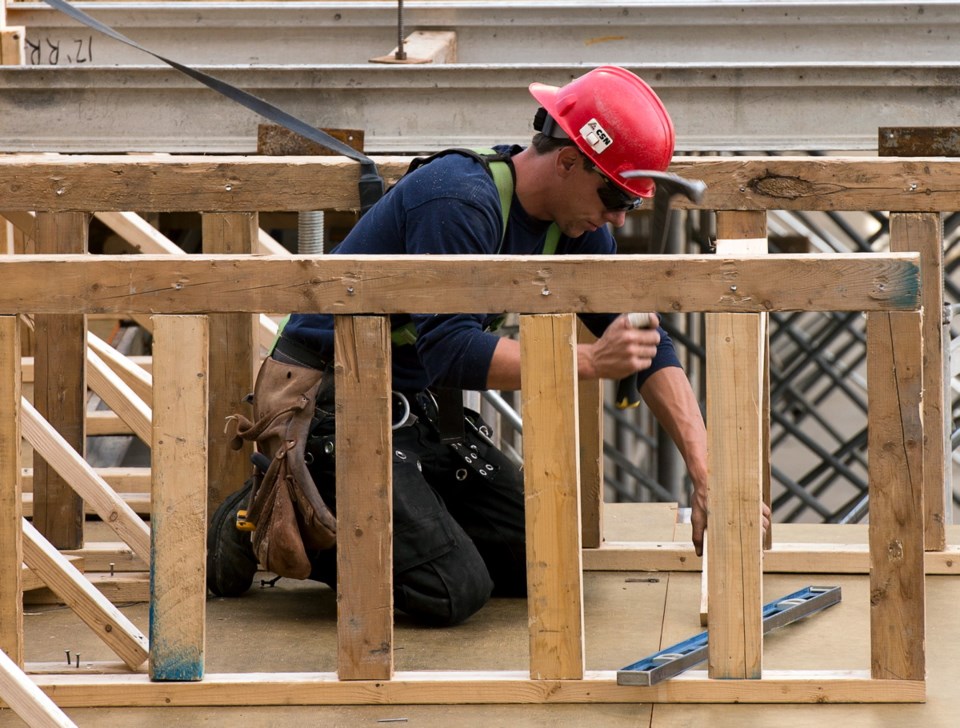The shortage of skilled tradespeople in Western Canada is so dire that the B.C. Construction Association is returning to Ireland this month to hire 600 people, the group’s vice-president said.
In fact, even if one in five students graduating from high school in B.C. during the next three years were to pursue a trade, there still wouldn’t be enough workers to fill shortages in the province’s construction industry, Abigail Fulton said.
Not everybody agrees with the recruitment drive, especially the province’s labour leaders, who argue employers can find skilled, unionized Canadian workers to fill immediate, vacant positions.
Yet, a consensus is developing that there will be a shortage of skilled workers in the coming decade, as proponents of the liquefied natural-gas industry, hydro-electric projects and oil and gas pipelines push their proposals forward.
“There’s lots of evidence to suggest we’re not doing enough to train construction workers in skilled trades in British Columbia, and if even half these projects come through we’re going to have a crisis unless we start now to deal with the problem,” said Jim Sinclair, president of the B.C. Federation of Labour.
The provincial government’s own statistics indicate there will be more than one million job openings over the next decade, and more than 153,000 of those will be among trades, transport, equipment operators and related occupations. Retirements will be responsible for two-thirds of the vacancies, and new economic growth will be behind the remaining third, the British Columbia Labour Market Outlook 2010-2020 states.
In the B.C. construction industry, about 30,500 jobs were expected to go unfilled by 2012, according to the association’s own statistics.
To address some of the problem, the association is organizing and hosting the Western Canada Construction Job Expo Oct. 31 in Belfast and Nov. 2 in Dublin, where it will represent about 30 employers, half of them from B.C., Fulton said.
Wanted will be workers in more than 50 construction trades, from bricklayers to framing carpenters, power-line technicians to welders. Architects and structural engineers are also in demand.
Two employees of the provincial nominee program, which allows the B.C. government to nominate individuals to immigrate to Canada, will attend, Skills Training Minister Shirley Bond said in an email statement.
“Our staff will be providing seminars on working, living and investing in B.C. and will provide important on-the-ground expertise and advice on immigration matters,” she said.
Bond said the program is critical in helping B.C. address the impending labour shortage and offers an accelerated pathway to permanent residence for eligible skilled foreign workers, international graduates, and qualified entrepreneurs and their family members who intend to settle in B.C.
The trip won’t be the first for the association, which made its first visit in March 2012.
Fulton said the association learned the Irish apprenticeship system was one of the best, and skilled tradespeople would be able to transition to Canada and earn their Red Seal, an interprovincial standard of excellence in the trades.
The Irish economy crashed in 2008 and still hasn’t recovered, and last year’s job expo drew 20,000 people, she said, adding unemployed tradespeople lined up outside the job fair, down the street and around the corner for as long as two days.
But the province’s labour leaders aren’t as excited as Fulton about the expo.
“There are British Columbians and Canadians that probably could do those jobs,” said Tom Sigurdson, executive director of the British Columbia and Yukon Territory Building and Construction Trades Council.
Fulton said she thinks the problem begins in high school.
Most school districts have de-emphasized shop classes and have promoted university during the past few decades, Fulton said, noting the trades have been used as a “last option” for students who can’t “make the grade.”
“The real challenge, I think, is convincing youth and their parents that trades is the way to go,” she said.
“We’ve got to really put a lot of focus in that area and try to make sure that young people in high school today recognize this opportunity before they get out of high school and decide to go to university.”



